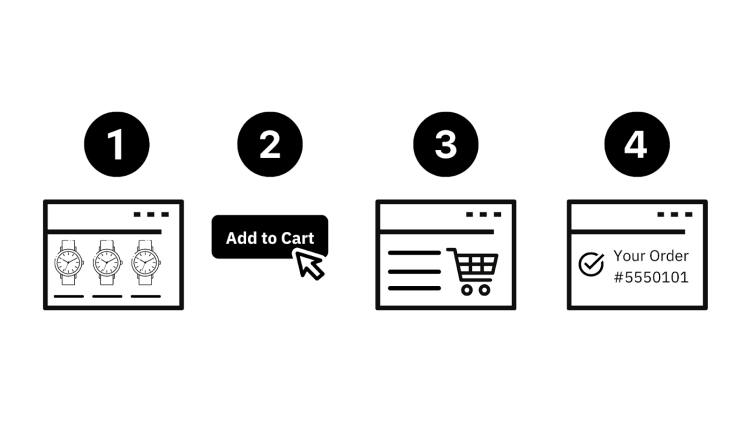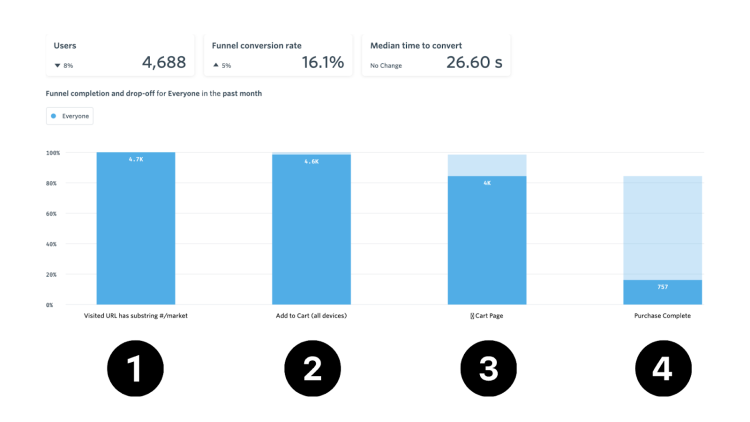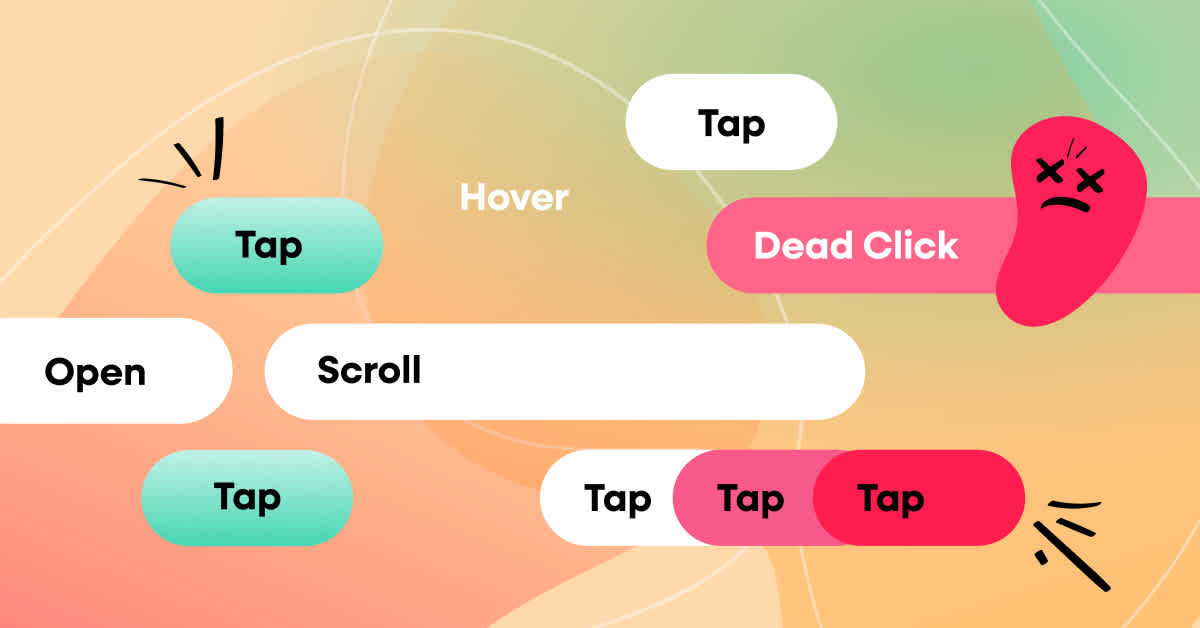Understanding how your customers or end users move through your digital experience is essential to creating enjoyable interactions with your company, prioritizing what to build next, and strengthening customer loyalty. While there are many methods for understanding the user’s experience with your digital property, one critical tool in everyone’s kit is the funnel.
In the digital world, a “funnel” is a way of visualizing data about how end users move through a series of steps in your product or website. Whether you’re an ecommerce product manager, a fintech director of UX, or a SaaS product researcher, it’s likely that there are multi-step workflows in your digital experience that you want to monitor for metrics like completion rates and unexpected user behavior.
Funnel analyses can reveal valuable insights. At Fullstory, we often hear success stories from customers about how running a quick funnel analysis on a crucial workflow in their product revealed both quick wins and major opportunities for improving their digital experience.
So what should you look for in a funnel analysis tool?
Flexibility is key
Digital experiences are complex, and your analytics tools should flex to meet an array of needs. There are two main ways that funnel analysis tools differ in flexibility: how they collect data, and how you can use that data in your analysis.
Manual instrumentation vs. codeless capture
The first key distinction between flexible and rigid funnel analysis is the way in which the data powering your analysis is collected and accessed. Some funnel analysis tools are limited by the need for manual instrumentation of all user interactions across your digital property. In other words, they require you to manually tag every item in your product or website in order to analyze how users interact with those items.
It’s easy to imagine how this approach struggles to scale as a digital experience evolves and becomes increasingly complex over time. For example, you may want to assess if customers are moving through a new sign up flow as expected. If your new sign up page is not manually tagged ahead of time, running a funnel analysis on that user workflow will require costly engineering resources to implement followed by an indefinite period of wait time while data is collected on the newly tagged workflow.
Other tools take a more flexible approach with implicit data capture (also known as codeless capture, auto-tracking, and automatic event capture). This means that individual events and user interactions across your digital experience are captured and indexed without manual tagging, providing you with more complete and accessible data about your product or website.
For funnel analysis, this distinction is pivotal for ensuring that your results are accurate and provide a full picture of how users move through a workflow. If you’re missing data about specific steps in your funnel, or that data is not easily surfaced in the tool’s UI, you risk making decisions based on an incomplete understanding of the user experience that you’re trying to optimize.
Event diversity
The other pillar of flexibility needed in your funnel analysis tool is the ability to pull in a diverse set of events for your funnel. Unfortunately, many tools can only handle page views or URL navigation for each step of a funnel. However, most websites and applications have workflows that involve more than simple, sequential page loads. Most likely, some of the most important workflows across your website or application require customers to take a variety of actions including clicks, page loads, scrolling, etc.
Have an product experience like the one pictured below? Funnels that are restricted to page navigation won’t properly show you who dropped out of the workflow because they encountered, for example, an error message upon the second step when clicking the “Add to Cart” button.
Frequently, your users take actions that have unique properties you want to package together into a single, “custom” event for analysis. For example, you may want to know the order quantity, shipping costs, and total price associated with each instance of a customer reaching the third step and viewing the “My Cart” page.
In addition to out-of-the-box events like clicks and page views, truly flexible and powerful funnel tools should provide you with a way to surface those custom events in your analyses as well. After all, even teams within the same company may need to analyze different customer use cases with funnels containing a variety of event types as steps.
Beyond quantitative insights
All funnel analysis tools provide you with quantitative information about how many users complete the entire workflow, along with drop-off percentages for each step in the funnel. While this data is somewhat useful on its own, it becomes truly insightful when paired with qualitative information.
While some platforms incorporate user surveys or customer feedback as vehicles for qualitative data, funnel analysis tools that also pair with session replay are most apt at highlighting why users exit multi-step workflows prematurely.
Often, quantitative data by itself won’t give you the level of insight necessary to take action or the level of empathy needed to address customer pain. Without a qualitative component of your funnel analysis, you’re left needing to conduct time-consuming customer interviews to understand behavior.
When session replay is attached to a funnel, you can easily investigate why users are failing to make it through a process, or even why it’s taking customers longer than expected to move from one step to the next (and you only need to view a few sessions). When both quantitative (how many) and qualitative (why) insights coexist in a single view of your funnel analysis, you can continually innovate and optimize your digital customer experience.
Qualitative insights and flexibility for the win
Funnels are part of every digital experience toolkit, but not all funnel analysis tools give you the full picture. For your analysis to be as effective, accurate, and actionable as possible, your funnel tool of choice should be flexible enough to surface all user interaction data, while also providing a qualitative component for deeper investigation into customer behavior. With both components, funnel analysis can become the hero in your journey to continuously optimize your digital experience.
Ready to understand your customers’ behavior and prioritize improvements to your digital experience? Let’s talk.






